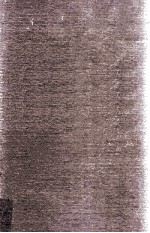
44 Theory of Oxidation-Reduction.&BY LEONOR MICHAELIS 1
Ⅰ.Definitions and Classification of Oxidation and Reduction 1
Ⅱ.Oxidation in Homogeneous Systems by Molecular Collision,without Complex Formation.Intermolecular Electron Exchange 8
Ⅲ.Oxidation by Intramolecular Electron Transfer within a Compound Formed by Donor and Acceptor 40
Ⅳ.Suggestions as to the Mechanism of Specific Enzymatic Oxidations 46
45.Thermodynamics and Mechanism of the Phosphate Bond.&BY NATHAN O.KAPLAN 55
Ⅰ.Types of Phosphated Bonds 56
Ⅱ.Methods of Calculating Free Energy of Hydrolysis of Phosphate Bonds 59
Ⅲ.Low Energy Phosphate Bonds 64
Ⅳ.Energy Rich Phosphate Bonds 68
Ⅴ.The Phosphate Cycle 71
Ⅵ.Generation of Energy-Rich phosphate Bonds 74
Ⅶ.Aerobic Phosphorylation 78
Ⅷ.Uncoupling of Phosphorylations from Oxidations 89
Ⅸ.Utilization of Phosphate Bond Energy 92
Ⅹ.Phosphate Bond Energy and Photosynthesis 108
Ⅺ.Phosphate Cycle in the Regulation of Metabolism 110
46.Transphosphorylating Enzymes of Fermentation.&BY SIDNEY P.COLOWICK 114
Ⅰ.General Considerations 114
Ⅱ.Yeast Hexokinase 126
Ⅲ.The Mammalian Hexokinases 129
Ⅳ.Galactokinase 133
Ⅴ.Phosphoglucomutase 134
Ⅵ.Phosphofructokinase 137
Ⅶ.Phosphoglucokinase 139
Ⅷ.Glucose-1-Phosphate Transphosphorylase 140
Ⅸ.Phosphoglyceromutase 141
Ⅹ.3-Phosphoglycerate Kinase 143
Ⅺ.Pyruvate Kinase 145
Ⅻ.Adenylate Kinase (Myokinase) 148
ⅩⅢ.Creatine Kinase 149
ⅪⅤ.Transphosphorylase Activity of Phosphatases 150
47.Dephosphorylation of Adenosine Polyphosphates.&BY H.M.KALCKAR 151
Ⅰ.Introduction 151
Ⅱ.Adenylpyrophosphatase 152
Ⅲ.Liberation of Inorganic Pyrophosphate from ATP 160
48.Aldolase and Isomerase.&BY OTTO MEYERROF 162
Ⅰ.Aldolase 162
Ⅱ.Phosphotriose Isomerase 180
49.Keto Acid Decarboxylases.&BY BIRGIT VENNESLAND 183
Ⅰ.Nomenclature 183
Ⅱ.ɑ-Ketocarboxylases 184
Ⅲ.Carboligases 202
Ⅳ.β-Ketocarboxylases 209
50.Amino Acid Decarboxylases.&BY OTTO SCHALES 216
Ⅰ.Introduction 216
Ⅱ.Occurrence and Properties of Amino Acid Decarboxylases 217
Ⅲ.Use of Amino Acid Decarboxylases for Analytieal Purposes 245
Ⅳ.Mechanism of Amino Acid Decarboxylation 246
51.Desulfinase.&BY CLAUDE FROMAGEOT 248
Ⅰ.Methods of Investigation 248
Ⅱ.Methods of Preparation 249
Ⅲ.Properties 249
52.Codehydrogenases Ⅰ and Ⅱ and Apoenzymes.&BY F.SCHLENK 250
Ⅰ.Introduction 252
Ⅱ.The Codehydrogenases 253
Ⅲ.The Apodenydrogenases 274
53.Succinic Dehydrogenase.&BY F.SCHLENK 316
Ⅰ.Introduction and Historical 316
Ⅱ.Significance 317
Ⅲ.Preparation and Properties 318
Ⅳ.Inhibitors 324
54.Hydrogenase and Hydrogenlyase.&BY W.W.UMBREIT 329
Ⅰ.Hydrogenase 329
Ⅱ.Hydrogenylase 332
55.Flavin-Containing Enzymes.&BY HUGO THEORELL 335
Ⅰ.General Properties of Flavin Enzymes 335
Ⅱ.Properties and Functions of Isolated Flavin Enzymes 342
56.The Iron-Containing Enzymes.A.Cytochromes.&BY K.G.PAUL 357
Ⅰ.Introduction 358
Ⅱ.Chemical Properties 359
Ⅲ.Biological Properties of the Cytochrome System 382
The Iron-Containing Enzymes.B.Catalases and Peroxidases."Hydroperoxidases."&BY HUGO THEORELL 397
Ⅰ.Introduction 397
Ⅱ.Historical 398
Ⅲ.Occurrence of Hydroperoxidases 401
Ⅳ.Action and Determination of Activity 404
Ⅴ.Purification and Crystallization of Hydroperoxidases 409
Ⅵ.Chemical and Physicochemical Properties of Hydroperoxidases 412
Ⅶ.The Physiological Role of Hydroperoxidases 426
The Iron-Containing Enzymes.C.The Enzyme-Substrate Compounds and Mechanism of Action of the Hydroperoxidases.&BY BRITTON CHANCE 428
Ⅰ.Introduction 429
Ⅱ.Methods for the Detection of Enzyme-Substrate Compounds 433
Ⅲ.Physical and Chemical Properties of the Enzyme-Substrate Compounds 439
Ⅳ.Equilibrium Properties of the Enzyme-Substrate Compounds 442
Ⅴ.The Reaction Kinetics of the Enzyme-Substrate Compounds 445
Ⅵ.General Properties of Enzyme-Substrate Compounds 447
Ⅶ.Summary and Future Possibilities 452
57.Copper Oxidases.&BY C.R.DAWSON AND W.B.TARPLEY 454
Ⅰ.Introduction 455
Ⅱ.Tyrosinase (Polyphenoloxidase) 456
Ⅲ.Laccase 483
Ⅳ.Other Phenolases 488
Ⅴ.Ascorbic Acid Oxidase 491
58.Oxidation of Amino Acids.&BY H.A.KREBS 499
Ⅰ.Introduction 500
Ⅱ.General D-Amino Acid Oxidases 501
Ⅲ.General L-Amino Acid Oxidases 514
Ⅳ.Specifie Amino Acid Oxidases 526
Ⅴ.Amino Acid Oxidases as Chemical Tools 534
59.Oxidation of Amines.&BY E.ALBERT ZELLER 536
Ⅰ.Introduction 536
Ⅱ.Monoamine Oxidase 537
Ⅲ.Diamine Oxidase 544
60.Lipoxidase or Unsaturated-Fat Oxidase.&BY RALPH T.HOLMAN AND SUNE BERGSTROM 559
Ⅰ.Discovery and Early Literature 559
Ⅱ.Occurrence in Nature 560
Ⅲ.Methods of Detection and Assay 563
Ⅳ.Purification and Isolation of Soybean Lipoxidase 564
Ⅴ.Properties of Crystalline Soybean Lipoxidase 565
Ⅵ.Oxidation of Unsaturated Fatty Acids by Lipoxidase 567
Ⅶ.Lipoxidase Inhibitors 572
Ⅷ.Mechanism of Enzymatic Oxidation by Lipoxidase 574
61.Enzymes in Luminescence.&BY E.NEWTON HARVEY 581
Ⅰ.Historical Introduction-Luciferin and Luciferase 581
Ⅱ.Enzymes in Luminescence of the Ostracod Cypridina 584
Ⅲ.Enzymes in Firefly Luminescence 590
Ⅳ.Enzymes in Bacterial Luminescence 592
Ⅴ.Kinetics of Luminescent Enzyme Reactions 598
Ⅵ.Mechanism of Light Production 608
62.Oxidation of Organic Sulfur.&BY.CLAUDE FROMAGEOT 609
Ⅰ.Introduction 609
Ⅱ.Fate of Methionine Sulfur 610
Ⅲ.Fate of Homocysteine Sulfur 610
Ⅳ.Fate of Cysteine Sulfur 613
Ⅴ.Fate of Cystine Sulfur 618
Ⅵ.Oxidation of Hydrogen Sulfide Sulfur and Free Sulfur 620
Ⅶ.Origin and Role of Thiosulfate 621
Ⅷ.General Outline of Oxidation of Organic Sulfur in Higher Animals 622
63.Anaerobic Glycolysis,Respirtion,and the Pasteur Effect.&BY FRANK DICKENS 624
Ⅰ.Anaerobic Glycolysis 625
Ⅱ.Tissue Respiration 660
Ⅲ.The Pasteur Effect 672
64.Yeast and Mold Fermentations.&BY.F.F.NORD AND SIDNEY WEISS 684
Ⅰ.Introduction 685
Ⅱ.Yeast Fermentations 685
Ⅲ.Mold Fermentations 740
Ⅳ.General Conclusions 786
Ⅴ.General References 790
